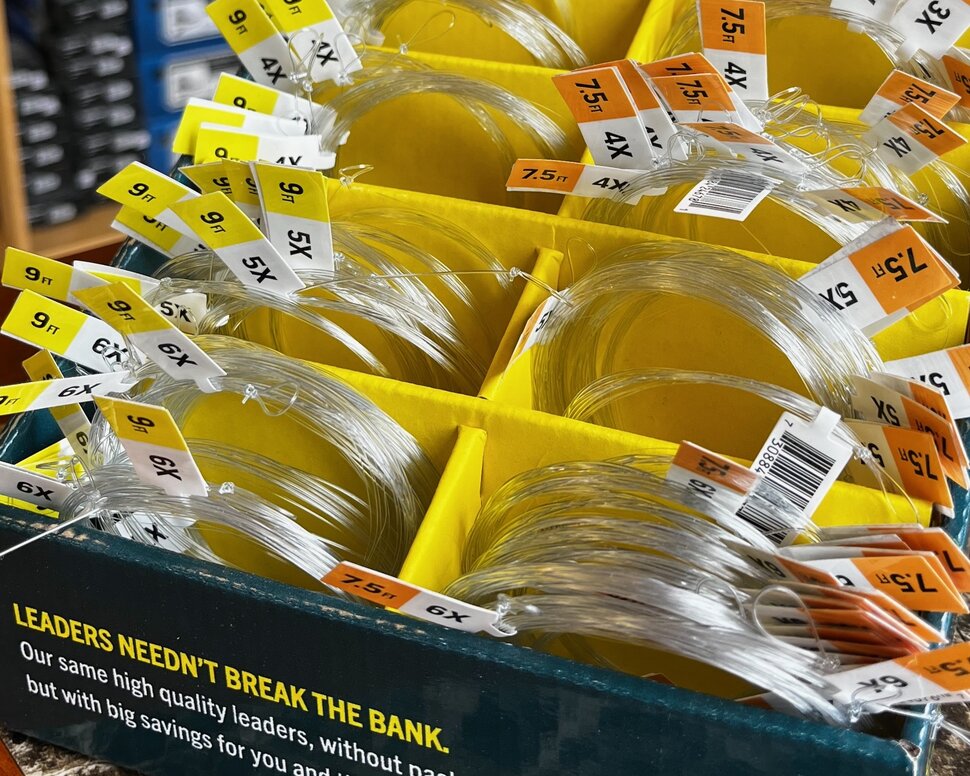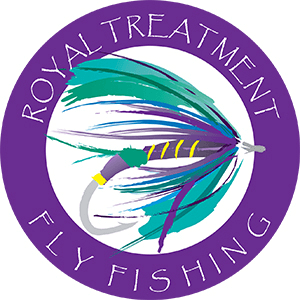Untangling Leader and Tippet

Most anglers coming into the shop fuss and fiddle over their fly selection, spending time choosing just the right fly for their next adventure, but when they check out at the front counter, leaders and tippet material are almost an afterthought. Unless we're talking Euro Nymphing, leader selection gets less attention than choosing what lucky hat to wear. So perhaps we need to have a little review here, as leader and tippet are high on the importance scale, falling right in between the fly line and fly.
First, we'll chat about nylon monofilament, the mainstay of leader and tippet material for our Northwest Trout fishing. I'll lay this out for beginners, so all of you experts can just nod your head and say, yup, I knew that.
Leaders are tapered, designed to continue the transfer of power generated by the rod through the fly line to the fly. Leaders need to be of the proper taper and tippet material for the type of fishing being done and fly being cast. Rod length also comes into play, but some of that is a personal choice. A basic rule of thumb is to start with a 9ft leader for rods over 8'6" and 7.5ft for shorter rods. Of course, rules are meant to be broken, and short leaders come in handy for delivering big flies or casting in windy conditions. Specialized leaders for Steelhead, Trout, Bass, and other species are designed to deliver the flies required on target. Some challenging conditions require very long leaders (12-15') to present the fly without spooking the fish. The leader must be designed for that task. Cobbling together a longer leader by adding tippet is a recipe for frustration. Choosing the right leader is just the beginning.
Choosing the correct tippet size again depends on the flies you'll be casting and the fish you are chasing. As mentioned, leaders are tapered, but only the last 24" or so is usable level tippet, so adding matching tippet material is advantageous to make the leader last longer. To determine the size tippet required, we use the "rule of three;" take the size of the fly, and divide by 3. For example, if you are tying on a size 12 Caddis, 4x should get the job done. 12 divided by 3 brings you to 4x. Again, rules are meant to be stretched sometimes, and spooky fish may require stepping down to 5x to bring fish to your fly. Just remember, big flies on light tippets can spin in the air, turning your tippets into a twisted mess and reducing strength. Small flies on heavy tippet typically will limit your success as fish might suspect foul play. Of course, stupid fish are out there, but I never seem to run into them.
For most Trout fishing applications in the West, grabbing a 9' leader tapered to 4x is a good starting place. Then, add additional 4x tippet for larger flies or tapering down when tactics that call for small bugs is relatively easy. If it's hopper time, or the Salmonfly hatch is on, start with 3x and adjust as needed.
Monofilament degrades over time and loses strength, breaking far below its designed breaking point. This, of course, can be a heartbreaking experience if you have just set up on the fish of a lifetime. However, since monofilament is reasonably inexpensive, ensure it is fresh before risking the aforementioned heartbreak. One cost-saving trick is to write the purchase date on your tippet spools and only buy the leaders you need for the season or a special trip. I'll admit that I love the "mix and match" option of Rio powerflex leaders now in bulk. Trout leaders sold without packaging allow you to grab just what you need for the type of flies and the conditions you expect, and saving a few bucks is good too.
Now, to confuse things even more, let's touch briefly on fluorocarbon for a minute. Flouro is a polymer with a shelf-life of 500 years or more; it sinks, so it is perfect for subsurface presentations like nymphing or lake fishing. It is also more abrasion resistant, so fluorocarbon is the Jam for casting streamers or fishing saltwater. However, ensure you dispose of it properly because it will outlive all of us. Fluorocarbon tippet material can be used on monofilament leaders for subsurface presentations where a full fluoro leader is not required, like nymphing or swinging soft hackles. However, if you're lake fishing, you may want to go with a full fluoro leader and matching tippet. One trick when using fluorocarbon to make sure your knots hold is to take an extra wrap on your knots and lube the material with saliva. Pull steady, but don't jerk the knot tight. Make sure it is fully tightened and test it before committing it to battle. All the other basics are the same, match diameter and taper down to match the size of the fly. One thing of note, fluorocarbon is almost invisible underwater, so you can go heavy (stronger) if needed.
We'll get into knots next time...




